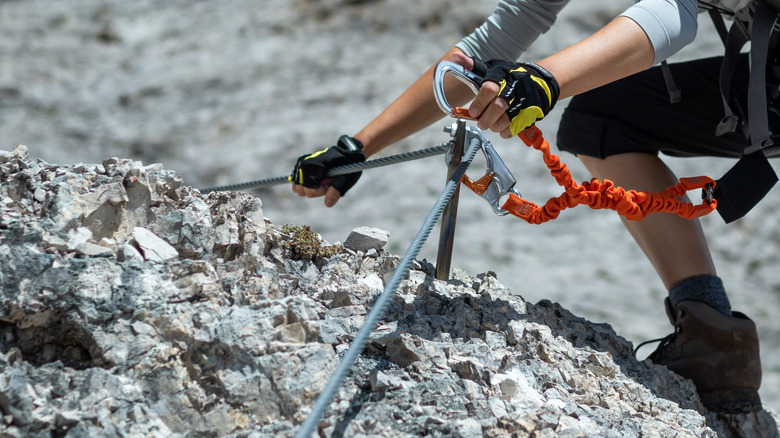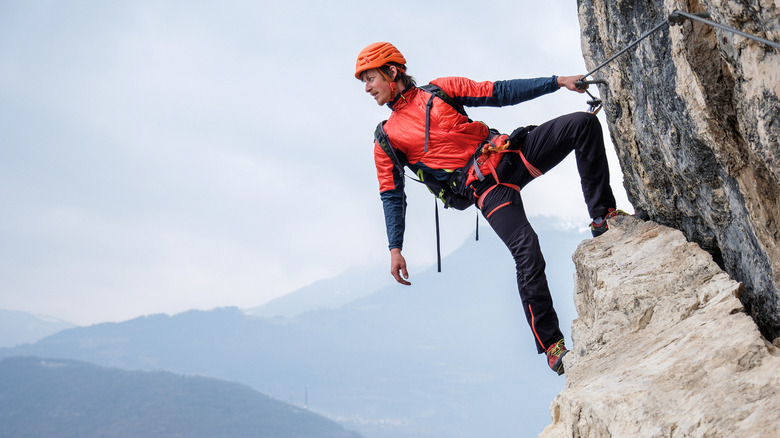Where, when, and what to bring
The full loop of the Giro del Sorapiss is around 16 miles and takes two days, with most hikers opting for an overnight stay at the cozy Rifugio San Marco Hut. The best time of year to do the hike is during summer, when the trail is most likely to be free of snow and ice. Summer weather in the Dolomites is sunny and mild, with average temperatures in the high 60s and 70s. However, there’s always a possibility of afternoon thunderstorms, so check the weather before embarking on your hike.
Next, know what to bring and just as importantly, what not to bring. Most mountain guides say that tennis shoes have no place on a via ferrata hike. They’re just too soft and squishy and don’t provide your feet with enough support. Instead, opt for a semi-rigid high or low shoe with superb traction. Another tip: Avoid stuffing your backpack with things you don’t need. Gourmet snacks hit the spot and all, but do you really want to be lugging that bottle of Barolo and brick of asiago up a bunch of ladders? Probably not.
Here’s a list of items you do need on your Giro del Sorapiss hike: high-quality rain gear, warm layers, sunglasses, sunscreen, a first-aid kit, and plenty of water and high-energy snacks. Gloves are also a good idea, as they provide a layer of protection between your hands and the metal cable, preventing blisters.
Other Giro del Sorapiss essentials

You need a few pieces of technical gear, which you can purchase at outdoor gear shops or Amazon. A climbing helmet will protect your head in case a hiker above you dislodges a rock, which is an all-too-common problem on the vertical sections of via ferrata hikes. You also need a climbing harness and a Y-shaped via ferrata lanyard, which has carabiners on the upper ends of the Y that attach to cables. This is how the system works. When you arrive at a via ferrata section, you clip the two carabiners to the cable and remain connected to it as you move through a precarious area. Your knees might tremble while climbing a tall ladder or tiptoeing across a teeny-tiny ledge, but you won’t plummet into oblivion if you happen to lose your balance. As long as your carabiners are clipped to the cable, your lanyard will catch you if you fall.
Make sure to bring a map of the route, as people have been known to get disoriented in this area. If your navigation skills are not up to par, hiring a guide could save you from a few extra hours of wandering through the Dolomites, famished and dreaming of heaping plates of spaghetti. Finally, the last thing you’ll need to bring with you on this hike is the courage to have a once-in-a-lifetime adventure. If you get nervous, just yell “mamma mia” loudly into the void. Be safe, have fun, and buon viaggio!

